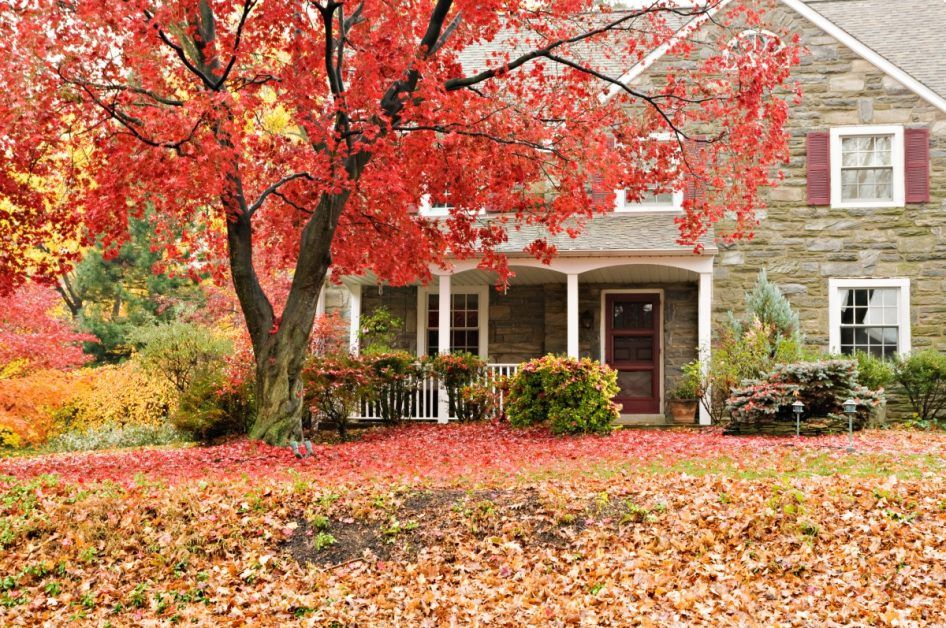If you’re landscaping your property, tree placement is crucial. In fact, we often find that folks who design their landscapes around their trees find that they enjoy the look, and their trees help to provide shade where it’s desired. Planting a tree smack-dab in the center of your lawn provides a beautiful relief in your landscape, while providing a shady place to hang out, or providing branches to hang a tire swing (once the tree is fully grown). That said, if you’re considering planting your tree on your lawn, you should be wary that it may create some complications.
Below, we’re delving into some of the pros and cons of planting a tree on your lawn, so that you can make the best judgment call for your property. As always, count on Lumber Jack and Jill for tree care services throughout the lifespan of your tree — we provide service throughout Northern Colorado.
Shade
The shade that your tree will cast can be both a pro and a con. Putting a tree in the center of an already shady lawn can double the amount of shade that your yard receives, which may end up killing the grass a bit. On the other hand, if you have a lawn that is highly exposed to sunlight, a new tree can reduce overexposure, cutting down on dry spots and bare patches in your yard. Our advice: Plant tree species that are smaller or those that have thinner canopies if you’re planting a tree in the middle of a yard that already gets plenty of shade. If your yard constantly receives sunlight, feel free to plant a large tree that will produce a full canopy.
Roots
You can’t control where tree roots grow. Be mindful that your tree will sprawl out as it grows, and its roots can grow wherever they please. You may find that you have roots popping up throughout your lawn, which could make mowing difficult, and they could end up causing a rolled ankle if you have kiddos running around through the yard. In addition, certain tree species have root systems that produce saplings that will sprout up throughout your landscape. These saplings can be a huge nuisance in a yard, and they’re difficult to pull (since they’re attached to the root structure of your trees). For example, aspen trees (which are a common choice for landscapes here in Colorado) produce saplings that jut up from the roots of trees nearby. These tree families grow and spread and often get out of control. For this reason, it’s often recommended to give aspen (and other tree species) plenty of space to spread out. Our advice: Don’t plant trees that will end up taking over your yard. Instead, find a tree species whose roots won’t become a hazard.
Soil
How healthy is the soil in your yard? Does your property rest upon feet of clay, or is the soil-rich topsoil? Keep in mind that trees require the proper soil to thrive. Have an arborist check the content of the soil throughout your landscape before planting a tree to see if the soil will support tree growth well. Your soil should have sufficient nutrients and minerals to support the tree’s growth, and the pH balance should be between 5.5 and 7.0 (for most tree species). You can improve the quality of your soil with fertilizer, add nutrients, minerals, and pH balancers to make your yard the ideal habitat for a new tree. Also, consider planting a tree species that is native to the area — these trees have a far better chance of surviving.
Mowing and Maintenance
As we mentioned, a rogue root can be a bit of a pain; that may become apparent every time you mow your lawn. Be wary that you may end up with roots protruding from your otherwise smooth lawn surface. In addition, a new tree will mean that branches can turn into an obstacle — especially when the tree is young and the branches are the same height as you are. If you’re patient and you pick a tree with roots that aren’t too “knotty” (excuse the dad joke), then these obstacles won’t be a big deal, especially as your tree matures to full size.
Other Obstacles
Be mindful that your tree can run into all sorts of things throughout your landscape as it grows. Never plant a tree too close to your house, since the roots can destroy your home’s foundation and the branches of the tree can damage your siding or roof. Be wary of nearby power lines as well, since your tree will inevitably grow to a fully mature size. Don’t plant your tree too near to your driveway or sidewalks (again, the roots can crack these structures). Also, you won’t want to plant a tree where it takes away from the view from your home or patio. Finally, be cautious not to plant a tree where it will cast too much of a shadow on other plants or trees.
From the day you plant your tree to the day it inevitably falls, we’re here to care for it. Count on Lumber Jack and Jill for tree care services, including trimming, arborist services, and more. We strive to ensure that your trees thrive! Call us to schedule service for your trees — we provide service for folks throughout Northern Colorado, including residents in Fort Collins, Greeley, Wellington, and Loveland.

